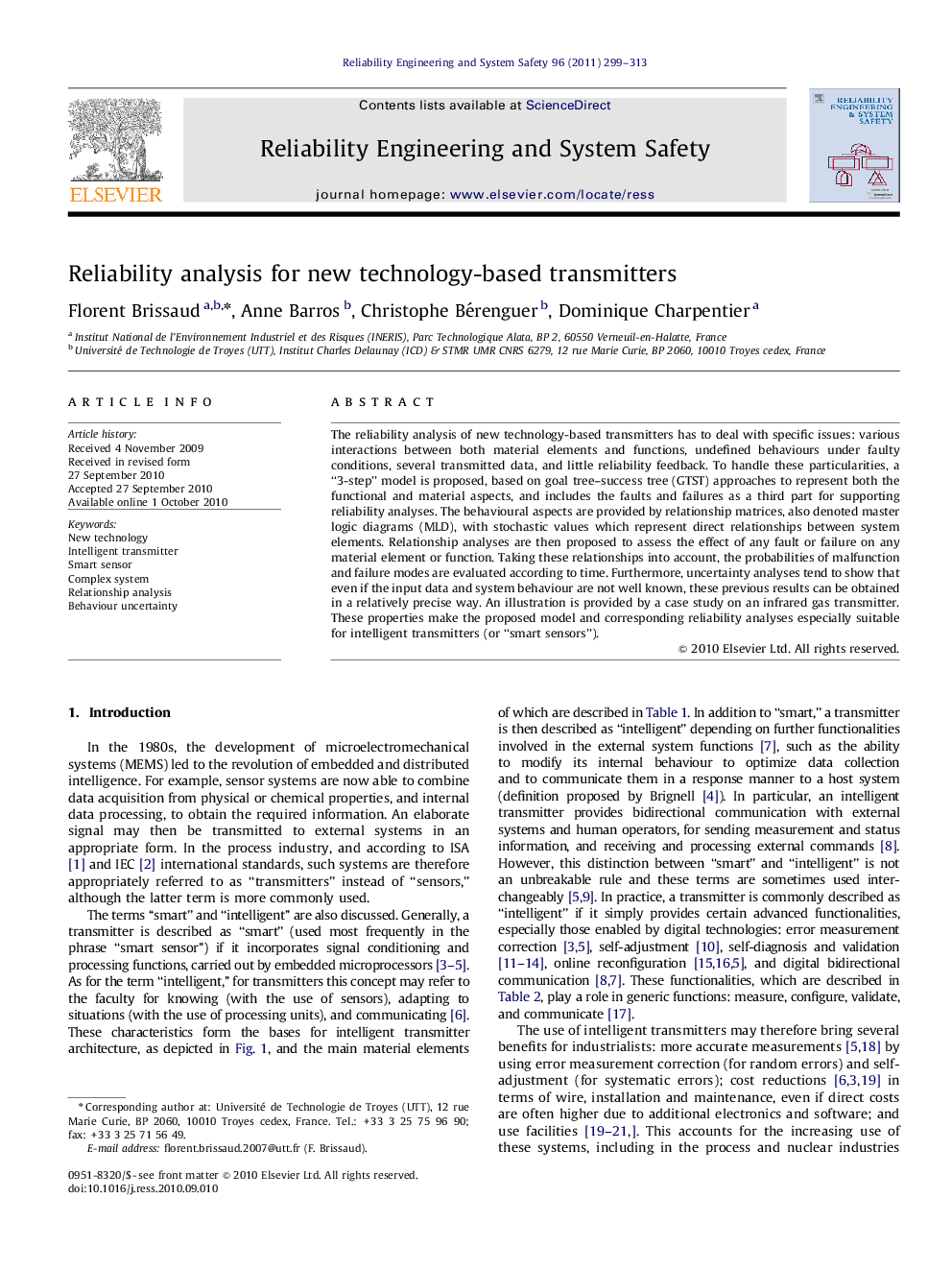| Article ID | Journal | Published Year | Pages | File Type |
|---|---|---|---|---|
| 806441 | Reliability Engineering & System Safety | 2011 | 15 Pages |
The reliability analysis of new technology-based transmitters has to deal with specific issues: various interactions between both material elements and functions, undefined behaviours under faulty conditions, several transmitted data, and little reliability feedback. To handle these particularities, a “3-step” model is proposed, based on goal tree–success tree (GTST) approaches to represent both the functional and material aspects, and includes the faults and failures as a third part for supporting reliability analyses. The behavioural aspects are provided by relationship matrices, also denoted master logic diagrams (MLD), with stochastic values which represent direct relationships between system elements. Relationship analyses are then proposed to assess the effect of any fault or failure on any material element or function. Taking these relationships into account, the probabilities of malfunction and failure modes are evaluated according to time. Furthermore, uncertainty analyses tend to show that even if the input data and system behaviour are not well known, these previous results can be obtained in a relatively precise way. An illustration is provided by a case study on an infrared gas transmitter. These properties make the proposed model and corresponding reliability analyses especially suitable for intelligent transmitters (or “smart sensors”).
